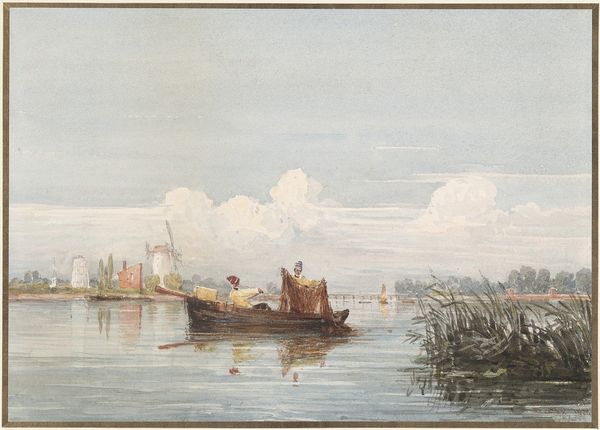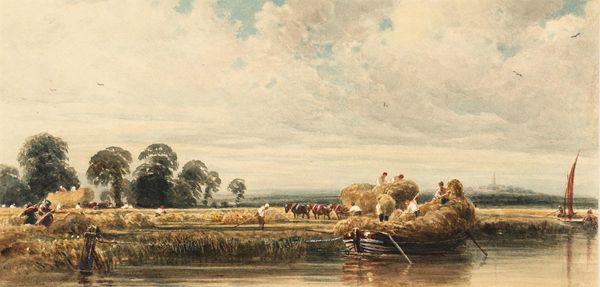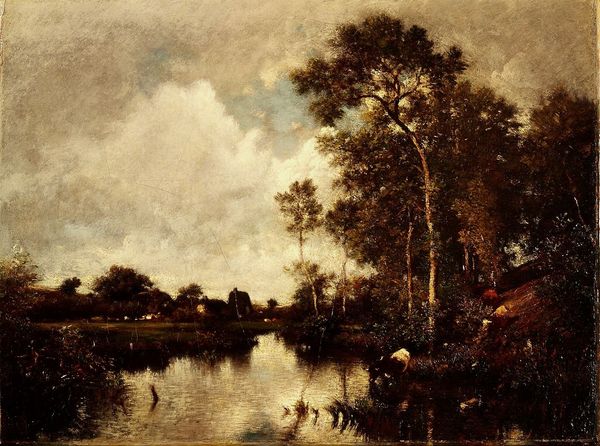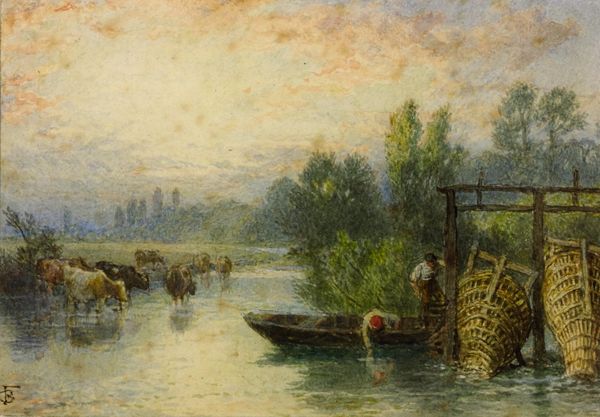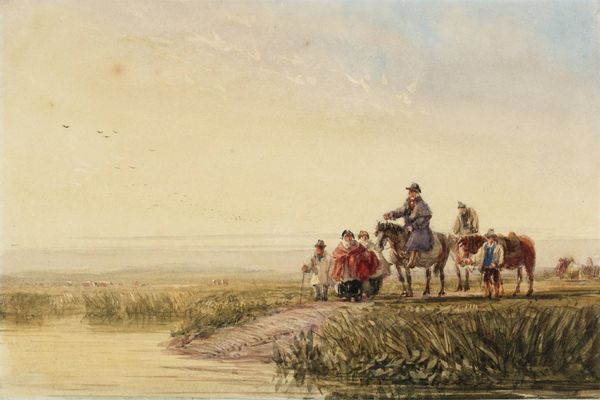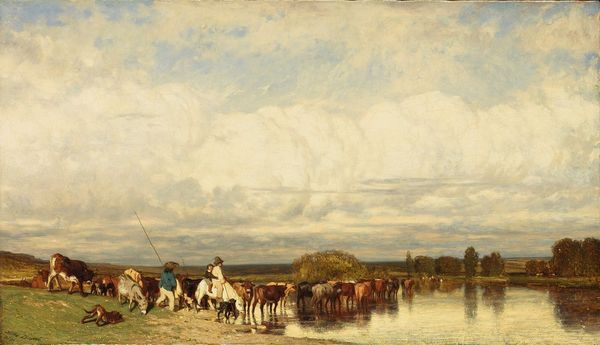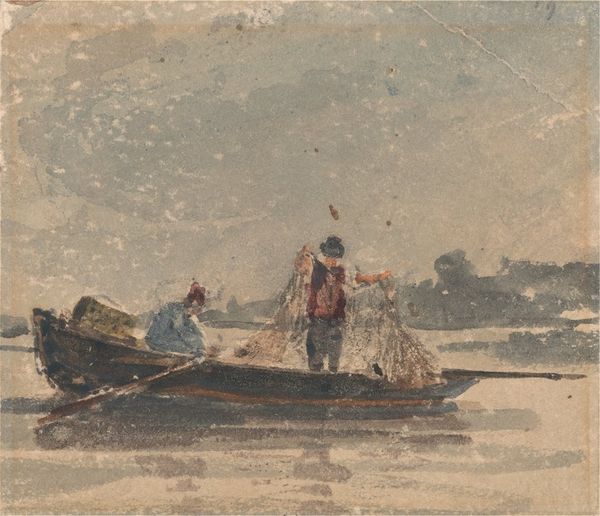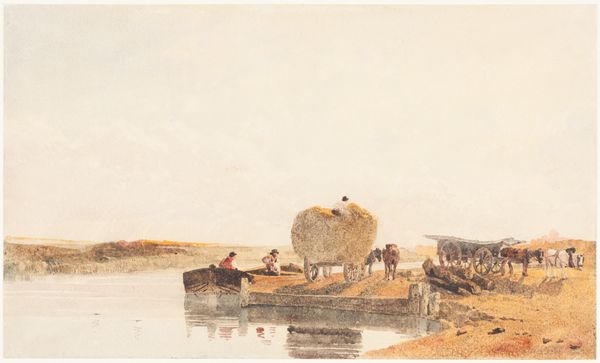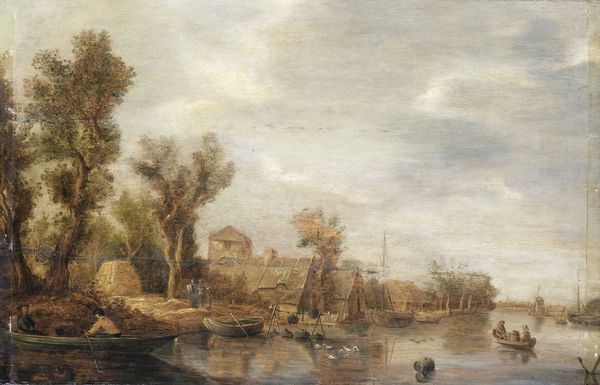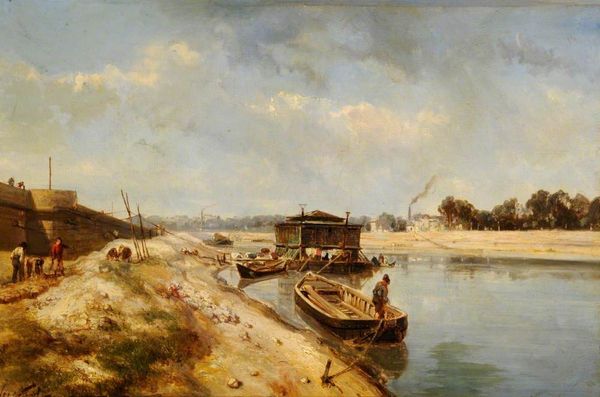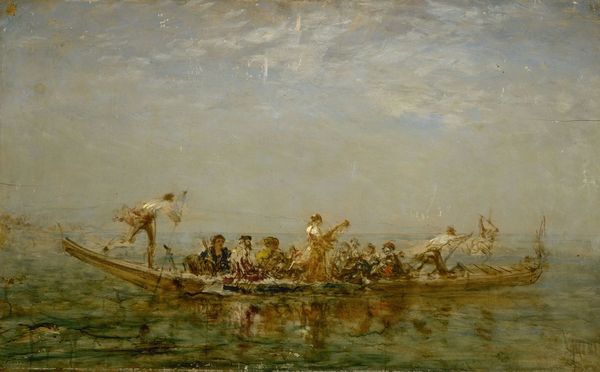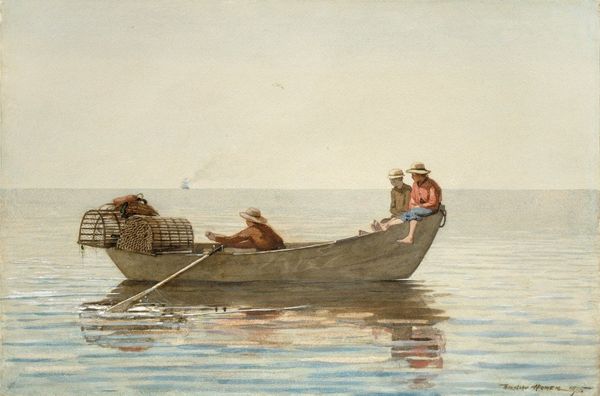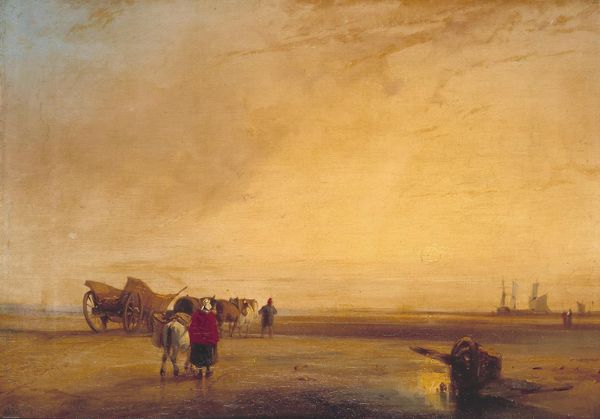
Dimensions: support: 238 x 549 mm
Copyright: CC-BY-NC-ND 4.0 DEED, Photo: Tate
Editor: So, this is Peter De Wint's "Roman Canal, Lincolnshire." It's a watercolor, and the way the light catches the haystacks is really striking. What do you see in this piece? Curator: I see a commentary on labor and land ownership during the agricultural revolution. The canal, ostensibly Roman, is now a site of intense agricultural production. Consider whose labor built that infrastructure, and who benefits now. What does it mean to overlay ancient power structures with contemporary exploitation? Editor: So, you're saying the Roman canal isn't just a backdrop? Curator: Precisely. It's a silent witness to changing power dynamics. How do the figures relate to the land, and each other? Are they landowners, or laborers subject to those who have the means to own land? These historical and social questions are critical to understanding the piece. Editor: I never thought about it that way! It's more than just a pretty landscape painting. Curator: Exactly. Art can reflect power, challenge it, or simply illuminate its presence.
Comments
tate 7 months ago
⋮
http://www.tate.org.uk/art/artworks/de-wint-roman-canal-lincolnshire-n03480
Join the conversation
Join millions of artists and users on Artera today and experience the ultimate creative platform.
tate 7 months ago
⋮
De Wint evolved a loose, free style of painting but never abandoned his restricted range of colours. He often used a warm range of browns and greens possibly deriving from Thomas Girtin’s later works. He varied this with touches of unmixed red or blue. Unlike Cox, De Wint did not make the study of climate and atmospherics a priority. His chief concern remained the creation of subtle and beautifully articulated compositions – like this work – based in stretches of open or wooded country, often in Lincolnshire. Gallery label, September 2004
